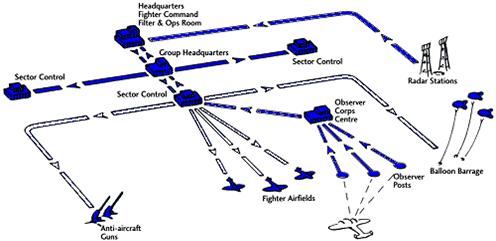I was recently reminded of a presentation I made to the SAIC/BP, Global Data Management team in Houston some years ago.
I was reflecting upon the information flows and logistics established by Britain’s Fighter Command to defend the UK from attack. The recently developed Radio Location system “RADAR” was but part of a chain of information flows to Fighter Command that identified the threats and allocated its resources, squadrons of Spitfires and Hurricanes, to meet these threats in a timely manner.
Our pilots of the battle of Britain, facing overwhelming odds in their Spitfires and Hurricanes were able to overcome a superior enemy, through undoubtedly their bravery and heroism, but also the information and data infrastructure that underpinned their success.
Information/data flowed to fighter command, position, height, numbers of aircraft, all added to a process that provided a picture of the threat posed and an ability by Fighter Command to deploy its resources in an appropriate, effective manner.
I used this as an example that to achieve success in data management there are many components of data that are funneled through to the end user which ultimately is able to make key decisions on the use of data and how that information can be exploited. Fortunately today we are addressing the exploitation of oil & gas opportunities and not the defense of the British Islands.
My point in this presentation is that a flow of data and information to the center is the basis upon which key decisions can be made. In 1940 this was a decision about the deployment of aircraft that defended the UK, The Spitfires and Hurricanes.
See Image below

Our Petrotechnical Data Management industry is about how we deploy, use and exploit the hardware assets and opportunities that are the essence of oil & gas exploration. The key to both problems is the flow of data and information in a timely manner. It was true in 1940 and is true in 2016.
Our industry wishes to develop, evolve and be relevant. In this we all agree, perhaps its not so complex as we imagine, when we are all working collectively to the same purpose.
In 1940 Britain was united by one principle, today the O&G industry needs to integrate and combine its data and information resources to underpin, support and sustain the E&P industry, providing timely data and information to exploit new opportunities and extend the life of existing fields.
Data management and effective use of information is not that new, perhaps we can learn from the examples of previous generations, and just remember this, in 1940 no computers existed, it was a process of analogue reports, radio telephony and wireless transmissions. It suggests that in 2016 with all our digital data and computer expertise and power, we have no excuse for the failure to deliver data and information in a timely manner.
Data Analytics – The current trend, indeed explosion in data Analytics, the ability to interrogate and extract value from vast amounts of data is the leading edge of technology, it can be said to be the very pinnacle of human ingenuity relating to the use of data and information, however, is it not the case that in 1940, Alan Turing and his team of code breakers in 1940 at Bletchley park were perhaps the true and real innovators of data Analytics.
The computer industry, information technology and the entire world of information can pay homage to the exceptional work that was conducted in this period to uncover and reveal the secrets of the Enigma Codes.
The approach, methodologies, process, procedures and ultimately the advanced computer processing capabilities of that era, were but the forerunner of today’s data Analytics industry. We must never be so arrogant as to believe that what we do could not have been imagined by the human mind, decades or generations ago, they can be, the difference is we have the technological tools, they created the science.
J A Maskell
jmaskell@seismicanalytics.com
www.seismicanalytics.com
Seismic Data Analytics is a limited company registered in England and Wales.
Registered number: 9671609
Copyright © 2016

